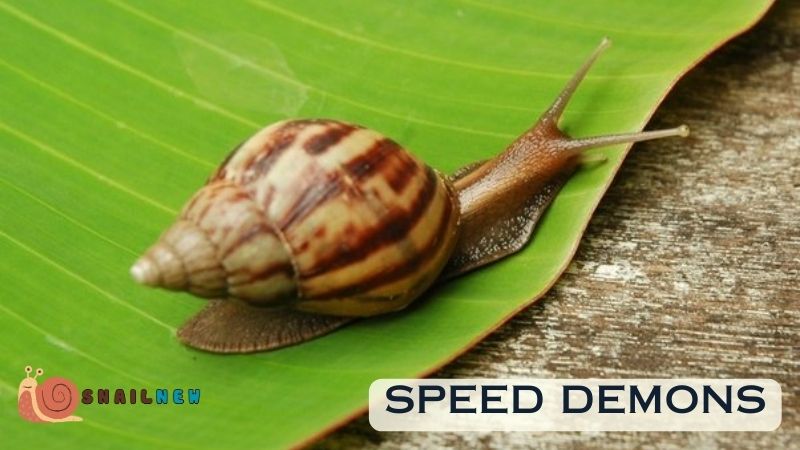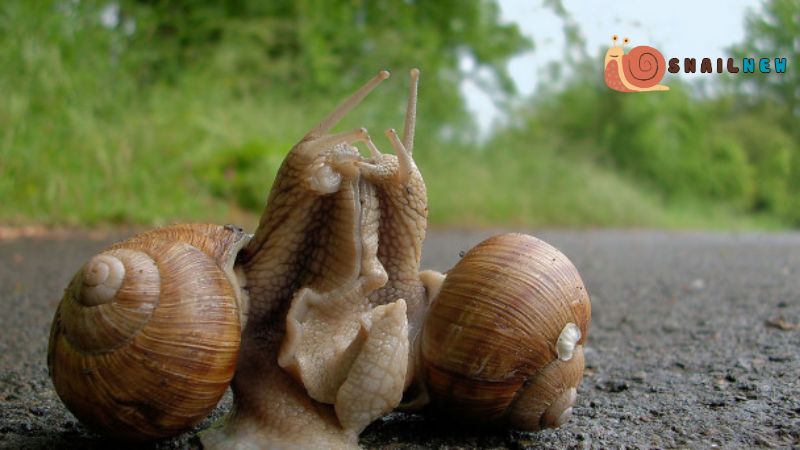Snails, often overlooked and underestimated, are among nature’s most intriguing creatures. These small, seemingly unassuming mollusks possess a wealth of unique characteristics that make them truly remarkable. From their leisurely pace to their remarkable adaptability, there’s much to learn and appreciate about these humble gastropods. Join us as Snailnew delve into the world of snails and uncover 10 fun facts about snails- these fascinating creatures.
Table of Contents
Toggle10 Fun Facts About Snails
1. Speed Demons:

Contrary to popular belief, snails are not always sluggish. While they are not known for their speed, some species can actually move surprisingly quickly. With a top speed of up to 0.013 meters per second, certain snails can cover ground faster than you might expect. So, next time you spot a snail inching along, remember that they’re not always as slow as they seem!
2. Slimy Situation:
The secretion of slime is among the most remarkable characteristics of snails, serving a multitude of functions essential to their survival. This mucus-like substance serves as a lubricant, enabling snails to glide effortlessly across various surfaces. Moreover, it functions as a protective barrier, guarding against cuts, bacteria, and the harmful effects of UV radiation. Thus, the seemingly innocuous trail of slime left behind by a snail signifies not only its movement but also the ingenious mechanisms by which nature ensures the resilience and well-being of these remarkable gastropods.
3. Home Sweet Home:

Perhaps one of the most iconic aspects of snails is their shell. These spiraled structures are more than just a pretty decoration—they serve as portable homes for these mollusks. Made of calcium carbonate, the shell grows with the snail throughout its life, providing both protection and shelter wherever they roam. So, when you admire a snail’s shell, remember that it’s not just a shell—it’s their cozy abode.
4. Diverse Diet:
Snails are not picky eaters by any means. In fact, they have quite an eclectic palate. From algae and fungi to fruits and vegetables, snails enjoy a wide variety of foods. Some species even indulge in small insects or carrion when the opportunity arises. So, the next time you encounter a snail, consider offering them a tasty treat—they’ll likely appreciate the gesture!
5. Sleepyheads:
Did you know that snails love their sleep? It’s true! These gastropods can enter a state of hibernation known as aestivation for extended periods, sometimes lasting up to three years. During this time, they conserve energy and wait for more favorable conditions to return. So, if you ever spot a snail taking a long nap, rest assured that it’s just part of their natural sleep cycle.
6. Longevity:
While the lifespan of a snail varies depending on factors such as species and environment, some snails can live for an impressively long time. With proper care and favorable conditions, certain species can survive for 15 years or more. So, if you’re considering keeping a pet snail, be prepared for a long-term commitment—they’ll be with you for the long haul!
7. Love Darts:

Snails have a unique mating ritual that involves the use of tiny calcareous darts. Before copulation, they shoot each other with these darts, which contain hormones that can increase mating success and fertility. This fascinating behavior is just one example of the intricate courtship rituals found in the animal kingdom. So, the next time you witness snails engaging in this curious behavior, appreciate it as a testament to the wonders of nature.
8. Eye Spy:
Snails may not have the most sophisticated eyesight, but they do have a unique way of seeing the world. Their eyes are located at the tips of their tentacles, allowing them to detect changes in light and navigate their environment with surprising accuracy. So, if you ever find yourself in the presence of a snail, remember that they’re always keeping an eye out for what’s around them.
9. Herbivorous Heroes:
Some species of snails, such as the Roman snail, are considered culinary delicacies in certain cultures. These gastropods are even farmed for their meat, which is low in fat and high in protein. So, the next time you’re looking for a unique culinary experience, consider giving snails a try—they might just surprise you with their delicious flavor.
10. Environmental Indicators:
Snails play a crucial role in their ecosystems and serve as important indicators of environmental health. Changes in their populations or behaviors can signal shifts in ecosystems, making them valuable to scientists studying biodiversity and ecology. So, the next time you encounter a snail in the wild, take a moment to appreciate the vital role they play in maintaining the balance of nature.
Final Words
In conclusion, snails are truly fascinating creatures with a wealth of unique characteristics. From their surprising speed to their intricate mating rituals, there’s always something new to learn fun facts about snails and appreciate about these humble gastropods. So, the next time you encounter a snail, take a moment to marvel at the wonders of nature’s creations—you’ll be glad you did!
Related Posts:
- Exploring the Pace of Nature: How Fast Are Snails?
- The Eyes of the Unseen: Can Snails See?
- Do Snails Have Brains? A Fascinating Journey into…
- Exploring the Lifespan of Snails: How Long Do Snails Live?
- Is a Snail a Vertebrate? Understanding Animal Classification
- What Color Are Snails? Exploring the Colorful World…


